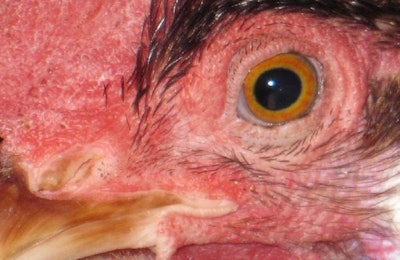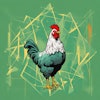
Monitoring the behavior of live broilers with cameras that analyze the optical flow patterns made by flock movements would appear to offer a new way of identifying and better understanding Camplyobacter infection.
Researchers at Oxford University’s Department of Zoology have found that chicken flocks shedding Campylobacter have a lower mean optical flow, i.e. less average movement, and higher kurtosis – or less uniform movement.
By monitoring bird behavior in this way, flocks likely to become positive can be identified within the first 7-10 days of life, much earlier than by using conventional on-farm biological methods.
Writing in the Proceedings of the Royal Society B, the researchers say that this early warning system has the potential to lead to a more targeted approach to Campylobacter control and also provides new insights into possible sources of infection that could transform the control of this food-borne pathogen.
The Campylobacter status of broiler flock is often only known once the flock has been processed. However, using on-farm methods to quickly and easily identify when flocks become infected with Campylobacter could be an important step forward from current methods in understanding the source of infection, and so a way of helping to design interventions for living birds.
An eye on welfare
Although Campylobacter is often classified as being harmless for chickens, its prevalence in flocks has recently been linked to welfare, with the implication that it might affect the behavior and health of the birds themselves.
With this in mind, the research team tested whether Campylobacter-infected flocks might be distinguishable by their behavior, so providing an immediately visible assay for infected birds while they are still alive.
Optical flow works by detecting the rate of change of brightness in different parts of a series of visual images temporally and spatially.
To test whether optical flow analysis might be able to detect when flocks become infected with Campylobacter, optical flow data was collected from 31 commercial broiler flocks. Fecal samples from those same flocks were tested for the presence of Campylobacter at different ages using standard laboratory methods. This offered a direct comparison between optical flow and testing from fecal samples.
The results showed statistical evidence of a link between broiler chicken flock behavior and Campylobacter status as early as the first 10 days of life.
Using optical flow data, farm managers would be able to access information in real time and so have an early warning of which of the their flocks were most at risk from health and welfare problems, enabling them to intervene before these became serious, and helping them to produce higher-quality, healthier food with better welfare.


















